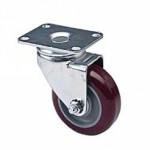So you are about to make a dollie and are having a tough time deciding on the right casters and wheels. Now don’t go off and grab just any set of casters that you may find. Before you make your decision you need to figure out the specifics as to what the dollie will be mainly used for. There are many factors to take into consideration. Number one, don’t think that any caster will support what you’re going to me moving.

Being a former employee of a music company’s distribution division, I have experienced first hand what can happen when you decide to go cheap or get lazy and not do your homework. Moving everything from light keyboards with attached stands to church organs to nine foot grand pianos you have got to be prepared for the environments you will be working in. One tends to find out real quick how costly it can be when you neglect to do your homework or just go cheap. Prime example… Our manager purchased and put together a new dollie with questionable casters and wheels made of plastic. The dollie sat in a truck during a freezing cold winter night. The next morning we arrived at one of our warehouses to pick up a custom seven foot grand piano made to order. As my fellow worker and I used the new dollie to transfer the piano into the truck, one of the new plastic casters shattered from the severe cold, throwing the custom seven foot grand piano abruptly to the ground. The damage was catastrophic! The customer was irate. The company had to take the hit and order a new piano and in the end the manager was no longer our manager.
The two major questions you need to ask yourself prior to purchasing casters would be…
- What will you be using it for? Yes, I know, for moving, but moving what? Are they particularly heavy items?
- What is the environment you will be mostly using it in? Will it be used outside as much as inside, on tile, hardwood, or carpet?
Answer these questions and you are on your way to finding what casters and wheels you may need. We’ll continue on with the process in Part 2.
